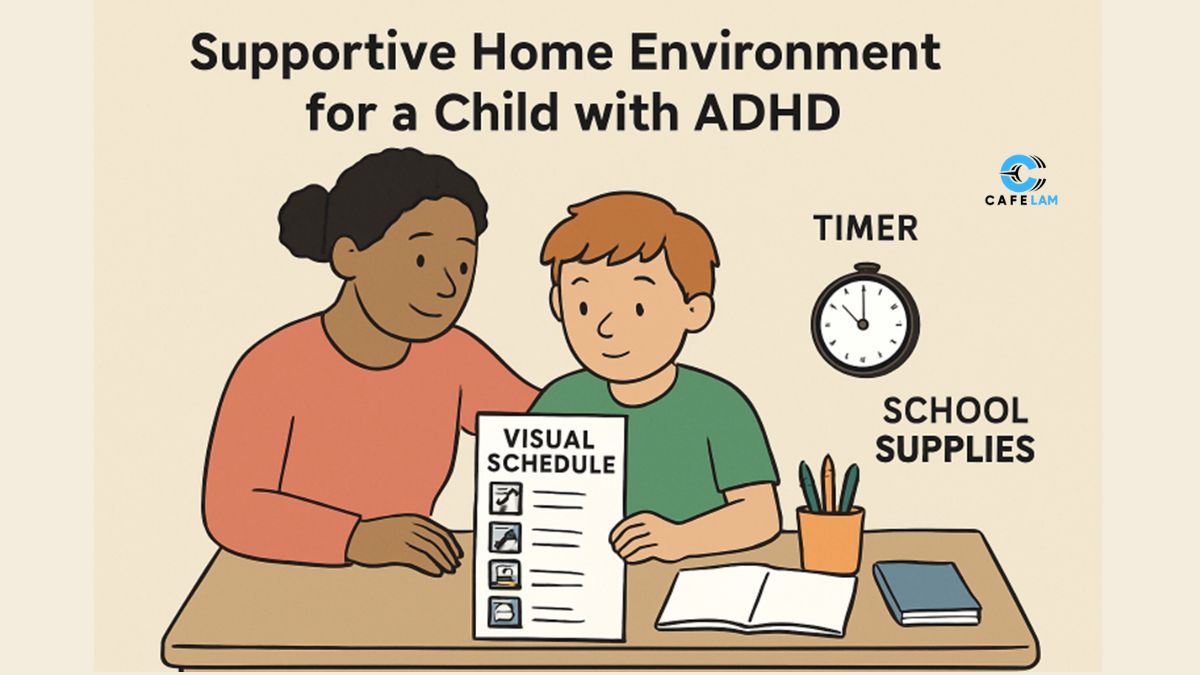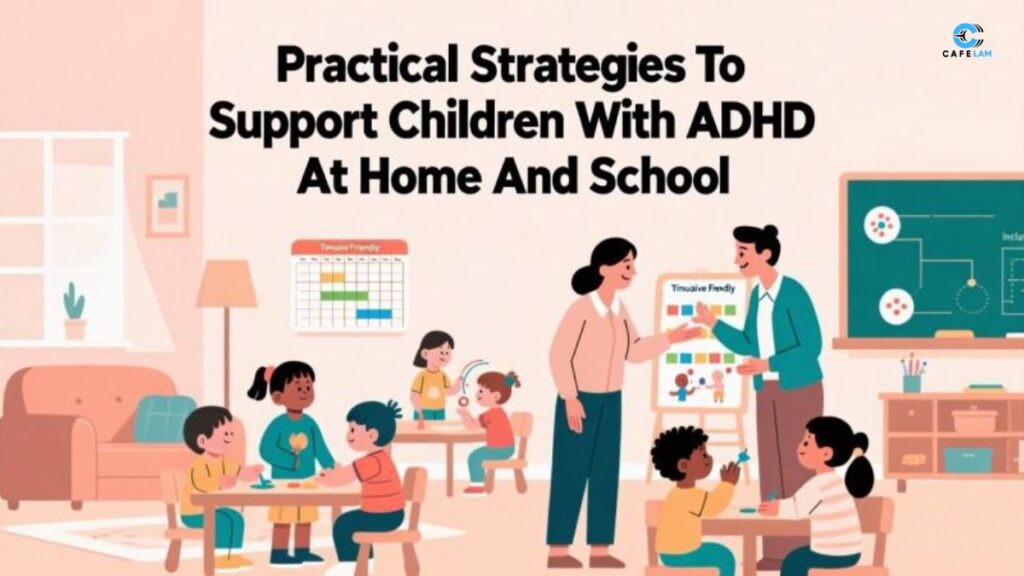Key Takeaways
- ADHD affects millions of children, influencing how they learn, interact, and function each day.
- Consistent routines, clear instructions, and regular communication are core supports for kids with ADHD.
- Collaboration between families and educators leads to better academic and social outcomes.
- Evidence-based interventions and lifestyle strategies can reduce symptoms and improve quality of life.
Understanding ADHD: Core Traits And Everyday Challenges
Attention Deficit Hyperactivity Disorder (ADHD) isn’t just about distractibility — it encompasses impulsivity, persistent restlessness, and the ongoing battle to complete daily tasks. Parents and educators of children with ADHD often find themselves navigating a world where organization, focus, and emotional regulation require extra support. For a comprehensive evaluation and tailored guidance, connecting with an ADHD doctor is a pivotal first step for families seeking clarity on how best to support their child’s development. Early and informed intervention can reshape everyday experiences for the child and those who care for them.
The impact of ADHD extends far beyond the classroom, affecting social relationships, self-esteem, and even physical well-being. Research highlights a significant prevalence among school-age children, which means countless families and teachers are working daily to find practical solutions. Effective support hinges on understanding ADHD’s core traits and acknowledging the unique challenges each child faces, thereby paving the way for strategies that make a real difference in both home and school environments.
Building A Supportive Home Environment
A predictable and organized home environment can serve as a powerful anchor for children with ADHD. Tools like visual schedules, clearly labeled storage bins, and quiet spaces help children anticipate transitions and reduce overwhelm. For example, a dedicated “homework corner” that is free of distractions and equipped with necessary supplies encourages focus and self-management. Setting consistent bedtime routines is also crucial, as many children with ADHD experience sleep disturbances—which, in turn, can amplify daytime challenges.
Practical aids, such as timers for homework or play, and visual reminders for daily habits, help children learn to manage their time and responsibilities effectively. Creating routines doesn’t mean a rigid schedule; rather, it offers soothing predictability, teaching kids self-regulation skills that carry over into school and social settings.
Effective Communication Strategies For Parents And Children
Clear and intentional communication forms the backbone of adequate ADHD support at home. Using concise, step-by-step instructions helps children process information more easily. The “first-then” approach—such as, “First, finish your math worksheet, then you can play outside”—uses simple sequencing to make expectations clear and achievable. Praising effort rather than only focusing on results nurtures perseverance and self-worth, which are essential for children who may struggle with frustration or defeat.
It’s equally important to create opportunities for children to assert independence within safe boundaries. Offering choices, such as which homework task to tackle first, can help children feel empowered while maintaining needed structure. Focused, calm dialogue and positive reinforcement can foster trust and teach lasting self-advocacy skills.

School-Based Interventions That Matter
Kids with ADHD thrive in classrooms where their unique learning needs are anticipated and respected. Evidence-based interventions—such as preferential seating, scheduled movement breaks, or access to fidget tools—can transform the school experience. Increasingly, educators implement Individualized Education Programs (IEPs) or 504 plans to structure support for students, often resulting in tangible academic and social improvements. Teachers, counselors, and psychologists working together can integrate social skills development and executive function training directly into the school day, supporting holistic growth.
Leveraging Technology For Positive Outcomes
While digital distractions abound, technology can also be a valuable ally for students with ADHD. Timer apps, visual planners, and task management tools help reinforce organization and time management. However, families should set intentional limits on recreational screen time, using device settings and location controls to maintain healthy boundaries. Keeping devices in shared spaces rather than bedrooms can also help prevent excessive use and allow for more consistent routines.
Nutrition, Sleep, And Activity: Building Blocks Outside The Classroom
Wellness routines that prioritize sleep, nutrition, and exercise form the foundation for effective management of ADHD. Protein-rich meals and omega-3 fatty acids have been linked to reduced hyperactivity in some children, while regular physical activity helps stabilize mood and attention. Developing healthy sleep habits—such as maintaining consistent bedtimes and engaging in screen-free wind-down periods—can enhance both behavior and academic performance. According to the National Institute of Mental Health, building healthy routines outside of school is just as vital as interventions within the classroom. Small, consistent changes in daily habits often lead to noticeable improvements over time. Finding strategies that fit an individual’s lifestyle can make maintaining these routines more sustainable and effective.
Collaborating With Professionals: Who To Consult
Parents do not need to navigate ADHD alone. Multidisciplinary support—combining medical, educational, and therapeutic approaches—can be the most effective pathway to progress. Pediatricians, therapists, and learning specialists often comprise a child’s support network, offering insight, assessment, and ongoing strategy adjustments. The CDC’s ADHD resource hub is a reliable starting point for researching behavioral or medical treatments and connecting with experienced professionals.
When To Seek Extra Support
Some children need more than standard classroom or home interventions. Changes in mood, persistent social difficulties, or concerning behavior across multiple environments all signal the need for specialized care. School counselors and pediatricians can help families determine when and how to access additional mental health resources and intensive interventions, ensuring children receive the layered support they need.
Supporting Each Other
Parenting or teaching a child with ADHD can be demanding, but support and understanding can be found in a growing network of families and professionals. Local support groups and reputable online forums create safe spaces for sharing advice, emotions, and encouragement. Importantly, fostering compassion and community ensures that children with ADHD—and those who champion them—never face these challenges alone. With collaborative and consistent strategies, every child with ADHD can unlock their unique strengths and potential, both at home and in the classroom.
Bringing It All Together
Understanding and supporting a child with ADHD requires a comprehensive, multi-faceted approach that spans home, school, and community. From creating structured environments and using clear communication to leveraging technology and promoting wellness routines, every strategy contributes to helping children navigate daily challenges more successfully. Collaboration with professionals, timely interventions, and active family engagement ensure that support is tailored to each child’s needs. By combining consistency, compassion, and practical tools, families and educators can empower children with ADHD to thrive, build confidence, and reach their full potential.







